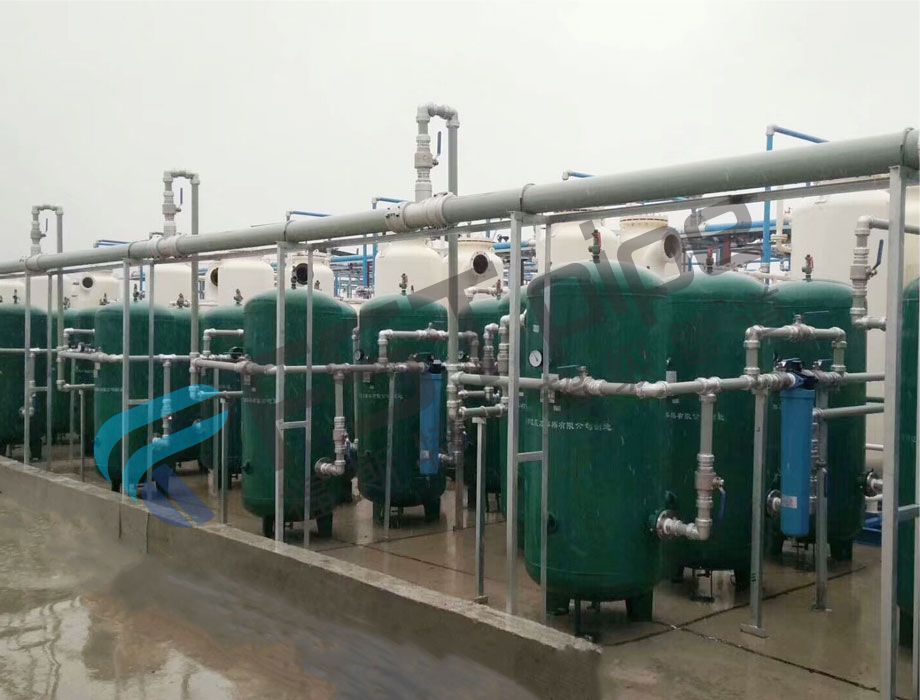-
You are here:
- Home
- > News
- > Industry Information
Air compressor pipeline installation instructions
Air compressor energy-saving pipes are not static. In China's steel pipe manufacturing standards, there are structural steel pipes and fluid transport steel pipes. Structural steel pipes are mainly used for general metal structures such as bridges and steel frames. They only require strength and rigidity, but do not require strictness of steel pipes. The fluid transfer steel pipe is mainly used for the fluid transportation with pressure. In addition to ensuring the strength and rigidity which meet the corresponding requirements, it is also required to ensure the airtightness, that is, the steel pipe is required to carry out the hydraulic test one by one before leaving the factory. For pressure pipelines, the medium it transports is often a flammable, explosive, toxic, temperature- and pressure-containing medium, so fluid transport steel pipes should be used. In actual engineering design, procurement and construction, it is often found that the use of structural steel pipes instead of steel pipes for fluid transportation is not allowed and dangerous!
Air compressor pipeline installation instructions
1. Selection of installation site
The selection of the installation site of the air compressor pipe is the most neglected by the staff. After the air compressor is purchased, it is easy to find a place. After the pipe is used immediately, there is no prior planning. As a result of this sloppy result, it has formed the consequences of future air compressor failure, maintenance difficulties and poor air quality, so the proper installation site is a prerequisite for the correct use of the air compressor system.
(1) Choose a wide area with good lighting to facilitate the space and lighting required for operation, maintenance and repair.
(2) Choose a place with low air humidity, low dust, fresh air and good ventilation, avoiding water mist, acid mist, oil mist, dust and multi-fiber environment.
(3) According to the requirements of the “Design Specification for Compressed Air Stations”, the heating temperature between machines in the compressed air station should not be lower than 15 °C, and the temperature between machines in non-working hours should not be lower than 5 °C.
(4) When the air compressor suction port or the unit cooling air suction port is installed indoors, the indoor ambient temperature should not exceed 40 °C.
(5) If the factory environment is poor and there is a lot of dust, pre-filtering equipment must be installed to ensure the service life of the air compressor system parts.
(6) When a single air displacement is equal to or greater than 20m3/min and the total installed capacity is equal to or greater than 60 m3/min, the lifting equipment should be installed. The lifting capacity should be based on the air compressor unit. The heaviest component is determined.
(7) Reserved channel and maintenance space, according to the requirements of the “Compressed Air Station Design Specification”, the channel width between the air compressor unit and the wall is 0.8 to 1.5 m according to the displacement.

2. Compressed air piping should pay attention to the matters needing attention
(1) When piping the main pipeline, the pipeline must have an inclination of 1 ° to 2 ° to facilitate the discharge of condensed water in the pipeline.
(2) The pressure drop of the piping pipe shall not exceed 5% of the pressure of the air compressor. Therefore, it is better to use a pipeline larger than the design value when piping. The calculation formula is as follows:
Pipe diameter calculation
Q=S×V and S=(πd2/4)×(2/3)
d: pipe inner diameter
V: flow rate (m/h)
S is the cross-sectional area of the water flow,
The inner diameter of the pipe can be measured, and π is a constant 3.1415926. Then, as long as the flow velocity V of the water is obtained, the flow rate can be obtained.
(3) The branch line must be taken from the top of the main line to prevent condensation from flowing into the working machine or back to the air compressor.
(4) Do not shrink or enlarge the pipeline, and use a reducer for the pipeline. If a reducer is not used, a turbulence will occur at the joint, which will result in a large pressure drop and an adverse effect on the life of the line.
(5) If there is a purification buffer such as a gas storage tank and a dryer after the air compressor, the ideal piping sequence should be air compressor + air tank + dryer. The gas storage tank filters out part of the condensate and also reduces the temperature of the gas. By reintroducing the compressed air of lower temperature and less water into the dryer, the dryer load can be reduced.
(6) If the air usage is large and the time is short, it is better to install a gas storage tank as a buffer. This can reduce the number of air compressor loading and unloading and maintain the service life of the air compressor. .
(7) Minimize the use of elbows and various valves in the pipeline.
(8) The ideal piping is that the main line surrounds the entire building so that compressed air in both directions can be obtained at any position. If the gas consumption suddenly increases in a branch line, the pressure drop can be reduced. In addition, an appropriate valve block should be placed on the annular main line to facilitate cutting during maintenance.
(9) When multiple air compressor air output pipes are connected in parallel, there is no need to install a check valve at the air compressor output.
